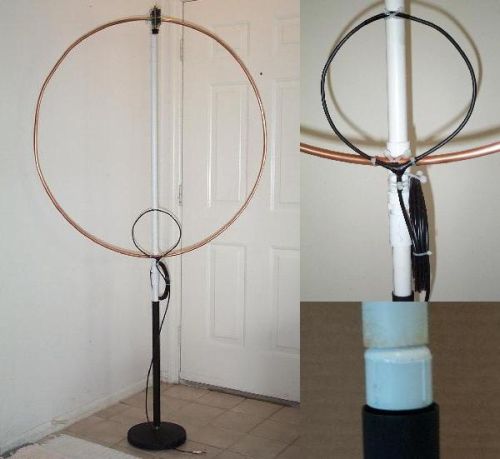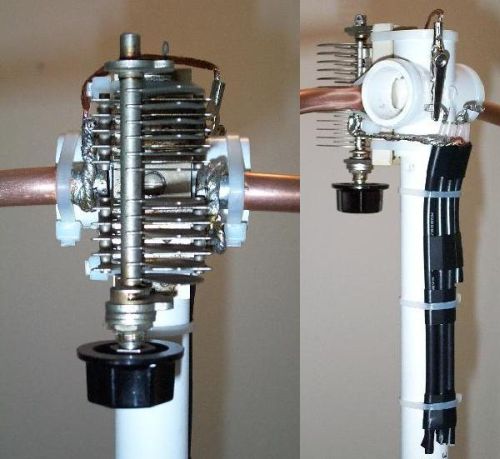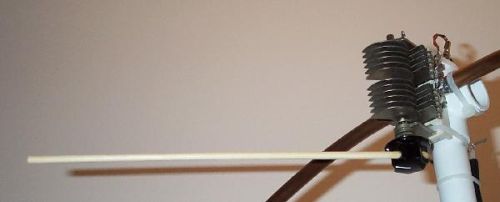My Magnetic Loop Antenna
I built this antenna when I lived in an apartment complex which does not allow antennas and where I had no real estate to play with.
Recently I also built a receive only magnetic loop, just for shortwave listening. This loop covers a frequency range of about 5 MHz to 22 MHz and is built from readily available parts. You can find my How-To article on this loop on My Magnetic Loop For Shorwave Listening (SWL) page. A sound sample is included showing the dramatic difference between the magnetic loop and the built in whip on a portable shortwave receiver.
The magnetic loop is small, reasonably efficient even close to the ground, has a low take off angle and it has a deep null on each side which lets you null out interference. The antenna also displays directivity characteristics similar to that of a dipole when mounted vertically. The only disadvantage I've experienced so far is that you have to retune quite often because of it's narrow bandwidth, especially on the lower bands. On the other hand it also means that the antenna acts somewhat as a pre selector which might just prevent your receiver front end from overloading because of strong (broadcast) stations.
I built mine from 10 feet (3 meters) of 1/2 inch (12.5mm) coiled copper pipe that I purchased at a local hardware store. The support structure is made of 3/4 inch schedule 40 PVC pipe. The base is made from a new (hey, they're only $10 these days) torchiere light. When you get one make sure the 3/4 inch support pipe and a 1/2 inch threaded PVC cap will fit inside tube of the torchiere. The reason for this is that a PVC cap makes an excellent bearing. Simply drop the cap in the tube before you put the antenna with the 3/4 inch PVS support pipe in the base. You'll see that the antenna rotates very smoothly this way.

The capacitor is an old Hammarlund split stator capacitor which I picked up at a hamfest. It has a range of 6-32pF. Since the two sections are put in series, the range is actually 3-16pF. This gives the loop a tuning range from 15 through 10 meters. To use the loop also on 17 and 20 meters I made two fixed capacitors from RG58 cable. These capacitors can be put in parallel with the tuning capacitor with an alligator clip whenever I want to work on 17 or 20 meters. If you decide to use the same technique make sure that the braid is at least a half inch removed at the end of the short pieces of coax cable. If you don't do this then it will arc at the coax ends whenever you key up at say a 100 Watts.

Later I added a "tuning stick". This makes tuning a bit smoother. I always first tune the antenna for maximum noise on the receiver. The problem was that with my hand so close to the tuning capacitor, I detuned the antenna too much which meant that I had to retune quite often. Now with the Tuning Stick I can get very close to 1:1 SWR when I only tune for maximum noise.
The construction is very simple as you can see below. I drilled a hole in the tuning knob and put a bamboo skewer (grocery store) in the hole with some epoxy.

I'm a QRP operator and never use more than 5 Watts (SSB). With the antenna in the living room and at this power level I've been able to work Europe, Asiatic Russia, the Caribbean, South America, North America, and West Africa. I have been able to work over 80 countries with only 5 Watt SSB and this antenna.
